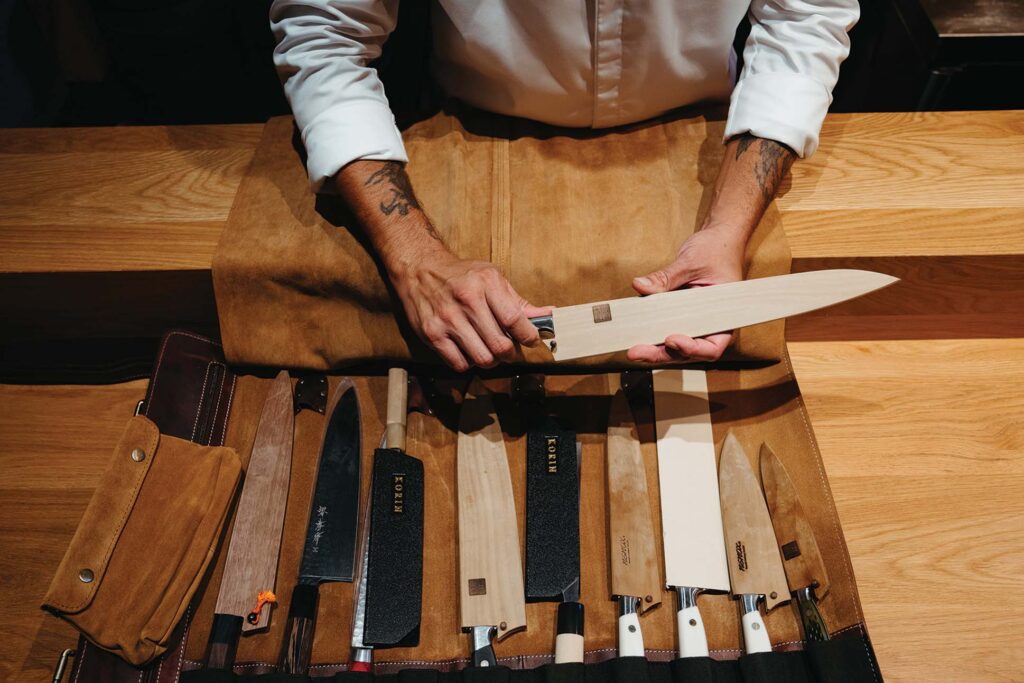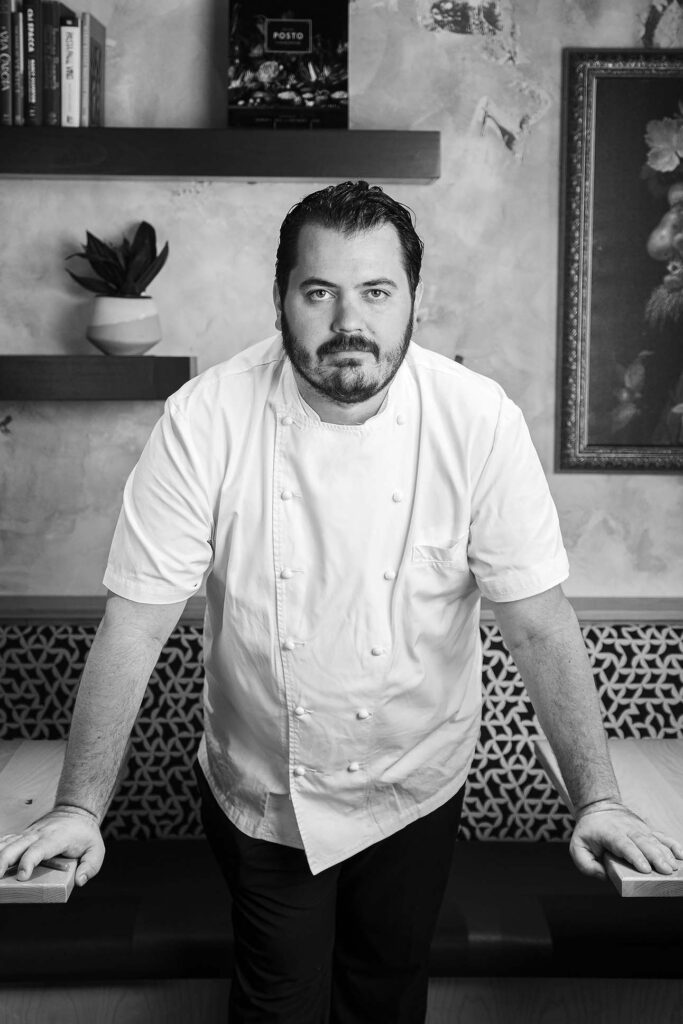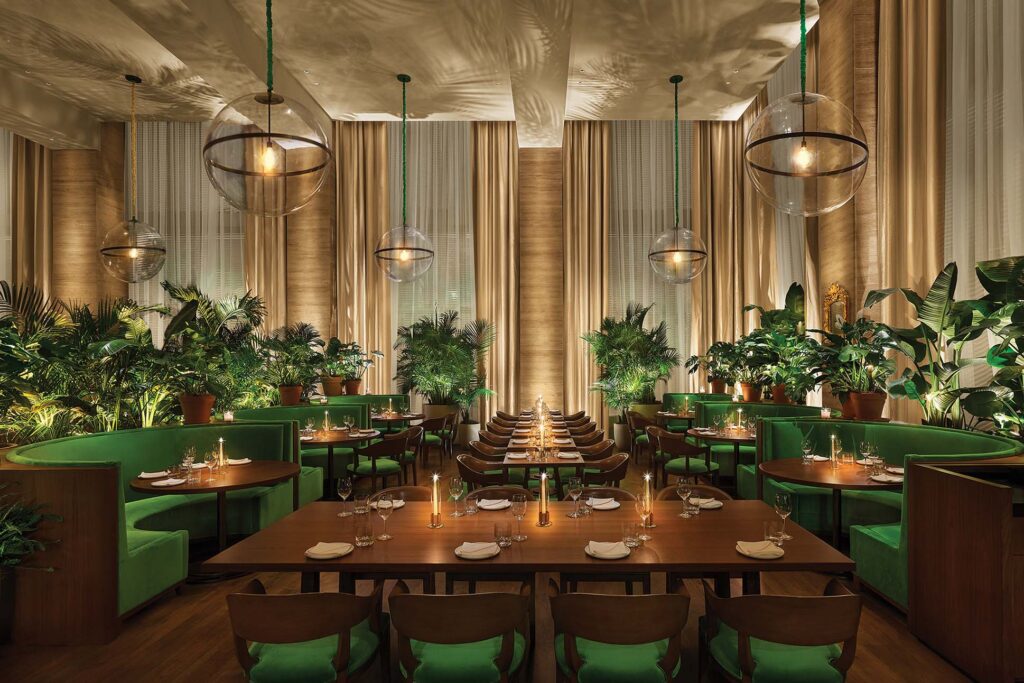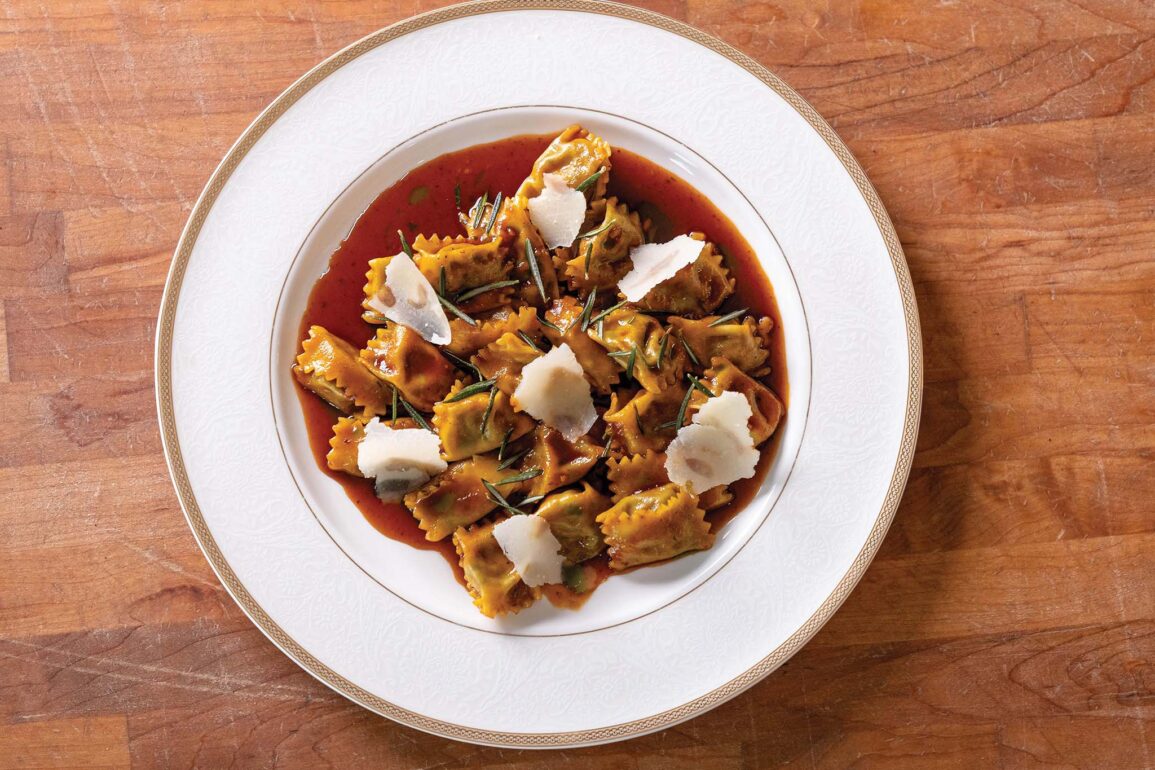By Annalise Mabe
Photos by Adrian O’Farrill and Annalise Mabe
Tampa took home its first-ever Michelin stars this May 2023, at the Michelin Guide Awards Ceremony held in Miami, gaining recognition for three innovative concepts: Koya, Lilac, and Rocca. The city was responsible for three of just four stars awarded to Florida restaurants at the ceremony, and the audience broke out into chants: “TAMPA! TAMPA!,” clearly approving the city’s rise in rank.
The three Chefs responsible for the honors—Chef Eric Fralick of Koya, Chef John Fraser of Lilac, and Chef Bryce Bonsack of Rocca—brought back their red and white Michelin trophies and black Chef jackets after being officially initiated into one of the highest and most esteemed echelons of culinary excellence in the world.
Any Tampa native will tell you that our food scene has been underrated for a while with hidden gems sprinkled across the city and some of the best food hiding in small strip plazas or tucked away in the heart of historic Ybor. But Michelin’s latest tour is proving that this is just the tip of the iceberg, and Tampa’s food scene is well worth the trip.
KOYA

Chef Eric Fralick and his wife, Adriana, are humble with a small team of just six (including themselves), preparing an intimate, hyper seasonal tasting course for just eight guests each evening at Koya.
Chef Fralick’s culinary journey began in New York. “Right out of high school, I started in fine dining Italian on the service side, FOH,” Chef Fralick says. “And then I got so interested in the chefs and the kitchen—that’s where I steered towards.”
Fralick then cooked his way through college, working in delicatessens in New York, and making bagels.
“My roommates in New York were all from Japan,” Fralick says, “and they were like ‘hey, come to Japan.’ All three had different restaurants in Japan—sushi, ramenya, izakaya—so I got to spend five years training with them, and that was a lot of fun.”
Back in the States, Fralick met wife, whom he gives credit for his being where he is today, and who grew up right here in Tampa. This brought them back down to the sunshine state where they opened their first restaurant together, Noble Rice, in 2016.
“With Noble Rice, we wanted to break stereotypes,” he says. “Every Japanese restaurant has miso soup and edamame. So, we didn’t put that on the menu. At most sushi places, everything’s just fried with layers upon layers of sauces, and you don’t actually get to experience the fish.”
For guests at Noble Rice and especially at Koya, the experience is quite different.
“The fish that we bring in,” Fralick says, “it’s a really intricate part of what our restaurant does.”
Fralick says he gets to tell this story to guests who dine at Koya every night.

“We have a buyer inside Toyosu Market—the largest fish auction in the entire world. So having that buyer in the market allows me to communicate with him, text him, call him every day to find out what the very best is.”
Fish is hyper seasonal, so having boots on the ground to help bring in the best of the best is nice for Fralick and guests at Koya.
Every Tuesday and Wednesday, Fralick drives to Tampa International Airport to pick up the fish flown in from Japan for the restaurant.
“There’s nobody coming to drop it off. I’m the one who goes. I’ve been elected,” he laughs.
It’s Fralick’s meticulous sourcing of ingredients and smart pairings that make Koya unlike any other Japanese restaurant for miles, and he and the small team have been elated post-Michelin star.
“It’s an incredible feeling,” Fralick says.
Guests and Michelin critics have high praise for Koya’s level of detail and attention paid to sourcing the freshest ingredients and creating fun pairings—no surprise for those who have a bite.
“We obviously work very hard, but our goal is to be ourselves,” says Fralick.
ROCCA

Rumor has it that Chef Bryce Bonsack of Rocca buys more fish sauce than any other restaurant in the area for his modern take on Italian pastas, where dishes also include local ingredients rooted in the area, tying Thai, Southeast Vietnamese, Southeast Asian, and Latin influences together in a bouquet of flavors restaurant-goers may have never had in one bite.
Bonsack has weathered more than a few storms with Rocca—the pandemic, a kitchen fire, a flood—and he wears every hat from psychologist to his staff, to mechanic when fixtures break, along with, of course, being head Chef of Rocca, his baby.
Bonsack is a graduate of the prestigious Culinary Institute of America, and has worked alongside some of New York’s finest at Corton in Manhattan and Blanca in Brooklyn. Originally, Bonsack got stuck with pasta when no one else wanted to do it, due to its finicky temperament. He grew to be quite good with it, and soon became the kitchen’s pasta expert, sought after for questions and answers by his fellow cooks and chefs.
But that Brooklyn grind led to burn out, and the paths were: take a job offered by French Laundry for a year (and be able to work in any kitchen afterwards) or keep the nose to the grindstone and ultimately reach zero percent creativity/functionality.
Bonsack forged another path, though, which started with moving back to Tampa where he grew up, and in with his parents. It was here where Bonsack started to be able to breathe a little, noticing that no one in Tampa was really doing pasta right. He cooked for a few investors who were willing, then and there, to open their wallets. But he knew he wasn’t ready just yet.
So he moved overseas for what he calls his finishing school, falling in with the Rocca family who own and run a 100+ year-old restaurant nestled in a castle on private property in Monforte d’Alba, Italy, where their domesticated wolves roam free, an icon Bonsack has brought to the Rocca logo, along with the family name (which he asked permission to use before coming back). “Sure, you can use it,” they’d said. “Just no spaghetti and meatballs or pineapple pizza.”
Deal.
“I knew how to cook already when I got to Italy; I knew how to make pasta,” Bonsack says. “In New York, I was making pasta every day and that standard became instilled in me. But Italy gave me time to reflect on my own voice, which was cultivated with the help of the Rocca family, but also as I became a traveler to the different regions, experiencing food as they do there—as a sort of mindset. It gave me confidence.”
And now, even on a weekday night, small groups of people congregate outside of Rocca in Tampa Heights just before 5PM, waiting for the door to open, taking the reservations they’ve had for weeks or months as they’ve waited to try what Bonsack says is “a very different restaurant than anywhere you’d see in Italy.” Inside, the staff floats seamlessly, and the place feels like a train that runs on time with orders placed in full so guests can sit back, chat, and enjoy the ride.
“There is an ethos and an understanding of what Italian food is, what the flavor profiles are,” Bonsack says. “And Rocca is a little bit of a reflection of that, but there’s also a lot of influences that are not Italian at all that are Southeast Vietnamese, Thai, Southeast Asian. There’s a lot of Latin influences. And you know, I’m actually not even Italian; I’m part Colombian from my mother’s side, so it’s nuanced in ways that might not be abundantly clear to guests. In a weird way, it all makes sense—and it doesn’t need to be in their face.”
As for the star, Bonsack says he’s still pinching himself a little bit.
“We’re obviously thrilled and we’re honored. We’ve just been always trying to get better every day,” he says. “I know that’s a little generic, but it’s the truth.”
LILAC

Born and raised in Los Angeles, Chef John Fraser is no stranger to the Michelin star, receiving one for eight consecutive years for his New York restaurant Dovetail. Fraser’s food tends to sprout from nostalgia, inspiration percolating from early memories of the neighborhood bars he grew up near in and around California. He’s also known for making vegetables taste really freaking good, with an eat from the earth focus on produce.
Fraser brings Lilac to Tampa’s first five-star hotel, The Tampa EDITION, and the food here, he says, is designed to be comforting and approachable. Lilac is Eastern Mediterranean-forward, pulling in local and seasonal ingredients for fresh new menu items.
With restaurants in NYC’s Times Square EDITION and LA’s West Hollywood EDITION, along with his NYC-based hospitality group, JF restaurants, Fraser’s got his hands full.
But he likes what he sees here, telling Edible Tampa Bay that, in larger cities, “there’s a lot more competition. I’ve spent quite a bit of time in Tampa,” he adds, “and I really like it.”
Fraser says his team in Tampa is excited about using the products that are from the city and the Gulf. “Much of what we do is about health and wellness and vegetable-forward cooking. We start with the season and the context—what’s coming out of the ground and what’s coming out of the sea,” Fraser told Edible Tampa Bay.
“There are a lot of great restaurants and a lot of curious people here,” says Fraser of Tampa. “And that’s what I consider the vibration of a great food city.”



